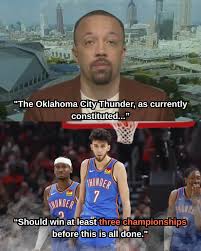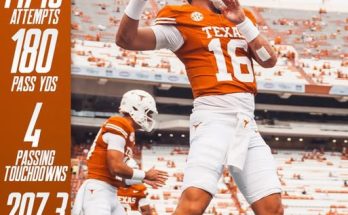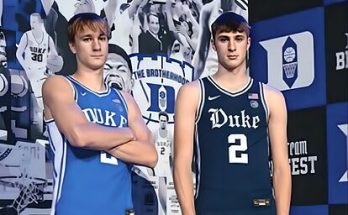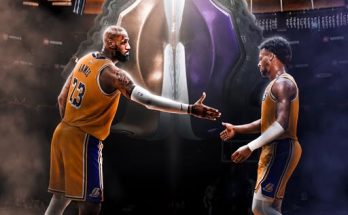There’s a rare kind of confidence when a basketball analyst, especially one as respected as David Dennis Jr., makes a bold proclamation about a team’s future. When he declared, “The Oklahoma City Thunder, as currently constituted, should win at least three championships before this is all done,” it wasn’t idle praise or the kind of flashy hot take that comes and goes with social media trends. It was a measured opinion grounded in what the Oklahoma City Thunder have been meticulously building for years—a roster so youthful, so deep, and so tactically sound that the NBA is beginning to take notice not just of their potential, but of their impending dominance.
At first glance, this kind of statement might seem excessive. Winning a single NBA championship is extraordinarily difficult. Franchises have gone decades without so much as a Finals appearance. There’s the luck of injuries, the grueling playoff matchups, the necessity for an elite coaching staff, and a front office that has to thread the needle financially and strategically every year. But the Thunder are not operating within the bounds of ordinary. This team has something truly extraordinary brewing, and if their current trajectory holds, Dennis’s three-championship prediction might even be conservative.
To understand why such confidence in the Thunder’s future is not only justified but perhaps even understated, we need to start with the foundation: the team’s philosophical and operational blueprint. Oklahoma City is not just another young team with promise; they’re the NBA’s model of intentionality and patience. General Manager Sam Presti is widely regarded as one of the smartest executives in the league. Known for his disciplined approach and long-term thinking, Presti’s vision has always been rooted in sustainability. He doesn’t chase short-term headlines; he builds ecosystems. That philosophy allowed him to stockpile a historic number of draft picks—at one point boasting over 30 first-rounders in a span of seven years—while steadily developing the kind of culture that players want to be part of and thrive in.
That culture is now bearing fruit in the form of a roster that boasts perhaps the best collection of under-25 talent in the NBA. At the heart of that is Shai Gilgeous-Alexander, a player who has evolved from a promising guard into a legitimate MVP candidate. Shai’s progression has been nothing short of mesmerizing. His scoring efficiency, elite footwork, and ability to collapse defenses have made him not only a nightly matchup nightmare but also a leader by example. He controls the tempo, can defend multiple positions, and has the rare ability to elevate everyone around him.
Gilgeous-Alexander is far from alone. Chet Holmgren, in his rookie season, immediately showed why he was worth the wait after missing his first year with a Lisfranc injury. A 7-footer with guard-like handles, shot-blocking instincts, and three-point shooting range, Holmgren is a unicorn in every sense of the word. He stretches the floor on offense and clogs it on defense. His presence allows the Thunder to play a hyper-modern style of basketball that values versatility, spacing, and switchability.
Then there’s Jalen Williams, a revelation in the 2022 NBA Draft. Rarely do second-year players exhibit the kind of poise, creativity, and two-way ability that Williams does. He plays with a veteran’s understanding of space and timing. His ability to create his own shot, facilitate in pick-and-rolls, and lock up opposing wings makes him an indispensable part of the Thunder’s rotation and long-term vision.
The synergy between these three players—Shai, Holmgren, and Williams—is already striking. They complement each other in a way that great NBA trios often do: Shai is the engine, Holmgren the anchor, and Williams the connector. But what makes this iteration of the Thunder more frightening than just a “Big Three” is their overwhelming depth and organizational discipline.
The Thunder’s bench, composed largely of players under the age of 24, is not simply filling time between starters’ shifts—they’re productive, disruptive, and developmental. Josh Giddey, for example, remains a tantalizing puzzle. A 6’8” point-forward with elite passing vision, he’s had growing pains, especially in finding consistency with his shot, but his IQ and versatility make him an ideal secondary ball handler or playmaker in various lineups. Even if he never becomes a knockdown shooter, his value in transition and half-court sets gives the Thunder an added dimension.
Meanwhile, Lu Dort continues to be one of the most physical and determined defenders in the league. His bulldog mentality is crucial in playoff settings, where intensity, grit, and on-ball defensive excellence are invaluable. Offensively, Dort has improved incrementally, adding just enough consistency from deep to force defenses to respect him.
Then you have a wave of young role players—Ousmane Dieng, Isaiah Joe, Aaron Wiggins, and Jaylin Williams—who are thriving under OKC’s system of accountability and experimentation. These aren’t players being stashed for later; they’re contributing now, learning the system, understanding their roles, and gradually becoming high-IQ difference-makers. Even more compelling is how Presti’s war chest of future draft picks allows the team to be both aggressive in trades and patient in player development. If any weaknesses emerge, Oklahoma City has the assets to pivot swiftly, whether to shore up depth, bring in a veteran, or secure a second superstar to flank Shai.
But even all of this talent and flexibility wouldn’t matter if not for coaching. Mark Daigneault has flown under the radar for much of his time in Oklahoma City, but he’s now being recognized for what he is: one of the sharpest young minds in the league. Daigneault has cultivated a culture of unselfishness, pace, and defensive integrity. His in-game adjustments, player development track record, and tactical acumen have earned comparisons to the likes of Erik Spoelstra and Mike Budenholzer. His ability to keep players engaged and motivated, even during lean years, shows a level of leadership that will prove invaluable during high-pressure postseason runs.
So why three championships? Why not one, or five? The answer lies in the combination of timeline, talent, and turmoil—or rather, the lack of turmoil. Many super-teams or dynasties are eventually undone by egos, financial strain, or injuries. But this Thunder team, as currently constructed, is built to last in every sense. The stars are humble, hungry, and homegrown. There’s no infighting for attention or headlines. There are no bad contracts on the books. And most importantly, the core is all under long-term team control.
This is a team whose competitive window hasn’t even opened fully, and they already made noise in the Western Conference. Once Holmgren fully matures, and once Williams and Giddey polish their decision-making, there will be no glaring holes. Combine that with the front office’s flexibility and Daigneault’s evolving system, and you have a team that will be contending every year from 2025 through 2030—and possibly beyond.
There will, of course, be obstacles. The Western Conference is loaded with emerging and established powerhouses. Denver remains a juggernaut as long as Nikola Jokić is healthy. The Minnesota Timberwolves have found new life. The Lakers and Warriors, though aging, remain relevant. New contenders like the Spurs (with Victor Wembanyama) are coming. But unlike most young teams, the Thunder are positioned to not just endure these battles but to outlast and outgrow them.
Consider the parallels with the Golden State Warriors, circa 2014. At the time, they were viewed as a fun, high-upside team with a great homegrown core but were still largely seen as unproven in the postseason. Once they broke through, their dominance spanned half a decade. What makes the Thunder even more intriguing is that they’re entering their rise in an era where dynasties are harder to build, but their blueprint avoids the typical pitfalls—injury-prone veterans, salary cap hell, or redundant skills on the roster.
The other part of David Dennis Jr.’s claim that deserves emphasis is the phrase “as currently constituted.” That’s an important distinction. It signals that the Thunder don’t necessarily need to make another massive trade or acquisition to reach this championship level. Unlike teams banking on a trade for a disgruntled star to elevate them, the Thunder already have the pieces. The assumption here is that with continued internal development, health, and smart decision-making, they can organically grow into a dynasty. That’s a rare and powerful kind of advantage.
Fans should also appreciate how rare it is for a team to go from a complete teardown to legitimate championship expectations in such a short time. After trading Russell Westbrook, Paul George, and Chris Paul in a matter of years, the Thunder were expected to languish in irrelevance for the foreseeable future. But they never settled. They didn’t tank for years on end. They competed, learned, and steadily got better. That kind of cultural resilience matters. It teaches players how to win, how to lose, and how to grow. That, more than anything, is why three championships might be a modest prediction.
If the Thunder do achieve that mark, it won’t be because of one magical run or a lucky postseason draw. It will be because of years of planning, alignment between front office and coaching staff, and the quiet greatness of players like Shai Gilgeous-Alexander, who chose to lead rather than bolt for bigger markets. It will be because of Chet Holmgren’s versatility, Jalen Williams’ two-way brilliance, and a host of under-25 role players who believed in the system.
It’s not just that the Thunder are good. It’s that they’re built to stay good—and evolve. That’s the hallmark of champions. And if they stay the course, they just might become the next great dynasty of the NBA. David Dennis Jr. may have said it first, but in a few years, a lot more people might be saying the same thing.



